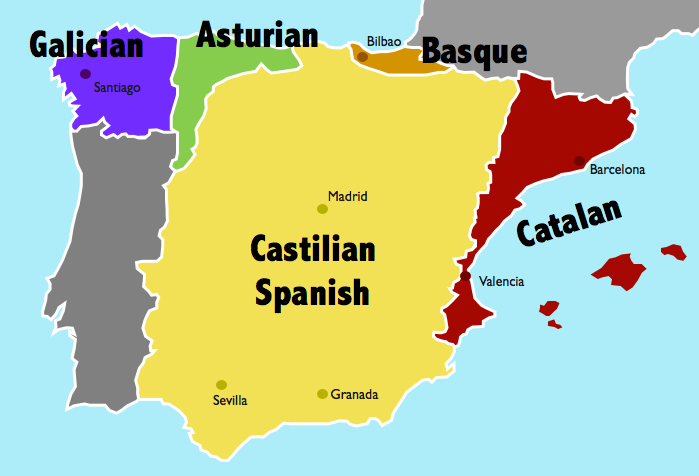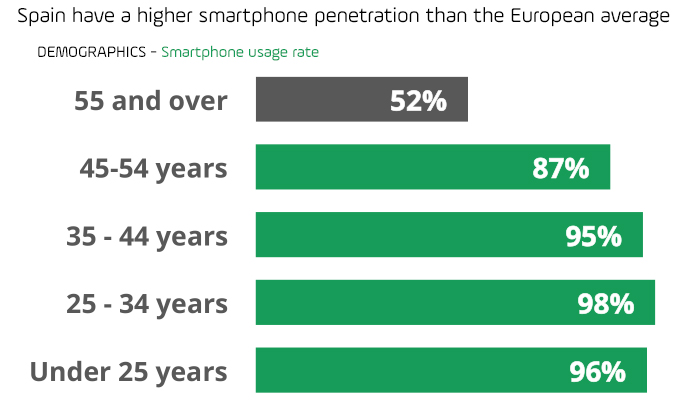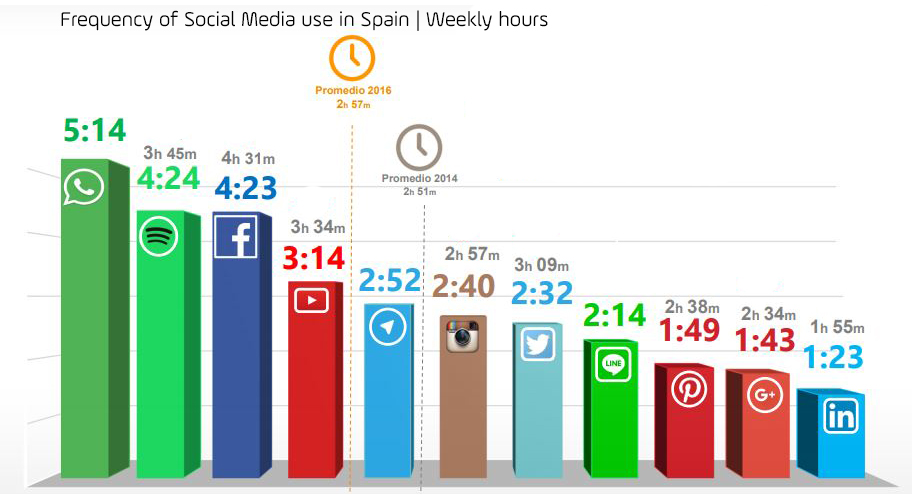Cultural differences | Doing Business in Spain
Reading time: 6 minutes
Did you know, that… 
• After years of economic recession, the Spanish economy is growing faster (3.1%) than Germany’s (1.7%) or the Dutch economy (1.7%)?
• 18 million Spaniards (2014) shop online? That’s almost 70% of the Internet users?
• Spain is the fifth strongest economy in Europe? Regarding e-commerce sale, Spain comes fourth in the ranking after England, Germany and France.
And don’t forget: this e-commerce is still growing in Spain.
Cultural differences
In a country as small as the Netherlands, you already see differences between the various provinces. Naturally, this is the same in Spain, which is 15 times larger than the Netherlands. In general, Spaniards are characterized as a very warm and hospitable people. But in southern Spain, they are often more laid back and accessible, compared to the more business-oriented and serious North. In the North, high discounts are not as common, but in the South, people are enthusiastic about it. However, whether we are talking about North, South, East or West – all the Spaniards are very proud of where they come from.
Consumer behavior
- Opening hours
In Spain, the opening hours in many shops are very different from the ones entrepreneurs might be used to in the Netherlands. While in the course of globalization and internationalization many larger business chains will be available during ‘common Western business hours’, some, especially smaller or more traditional shops might still include a longer lunch break between 2p.m. and 4p.m. and instead open longer in the evenings. Especially with the hot weather in the summer, closing your store at the ‘early’ Western times will cost you customers and revenue.
- Service
Spanish customers are not as ‘spoiled’ with all inclusive services and free shipping as customers in the United Kingdom might be. Use this to your advantage and distinguish your service from the local competitors by offering an extra little comfort and consumer friendliness.
Keep in mind however, that different shipping costs and times apply before advertising your services.
Website
- Look and feel Spanish
Tip: Pay attention to a reliable appearance and a true Spanish look & feel.
Despite the fact that the Spanish e-commerce market shows positive figures, there are still consumers who are somewhat hesitant in terms of online shopping. The fear of fraud and failure to fulfill promises plays a major part here. A reliable website is essential. Spanish customers will for example trust your services much more if you integrate brand marks (e.g. Confianze Online) and customer reviews in Spanish. Make sure your website has a secure connection.
- Language
 Tip: If you want to sell to the Spaniards you will be more successful if you do that in Spanish too. And use the correct Spanish language. Spaniards are proud of their language and do not speak English as well as Dutch people for example. You will attract a lot more customers, if your services are offered in Spanish. Information material, such as download guides and leaflets, should also be offered in Spanish. Spain is divided into 17 states with 5 different official languages: The national language, Spanish (also Castilian) and 4 regional languages: Catalan, Basque, Galician and Aranese. The main language is Spanish, so with a Castilian website, you can warm up most of the Spaniards for your product or service.
Tip: If you want to sell to the Spaniards you will be more successful if you do that in Spanish too. And use the correct Spanish language. Spaniards are proud of their language and do not speak English as well as Dutch people for example. You will attract a lot more customers, if your services are offered in Spanish. Information material, such as download guides and leaflets, should also be offered in Spanish. Spain is divided into 17 states with 5 different official languages: The national language, Spanish (also Castilian) and 4 regional languages: Catalan, Basque, Galician and Aranese. The main language is Spanish, so with a Castilian website, you can warm up most of the Spaniards for your product or service.

- Mobile
Tip: Make sure your Spanish website is also readable on a mobile device.
There are few countries that are as proud of their gadgets as the Spaniards. Despite the online backlog, with 85% of the population owning a smartphone, the m-commerce is really popular among the Spanish people. They have a higher smartphone penetration rate than the European average (61%) and Spain is seen as the global hotspot of mobile internet. Research by Nielsen found that in Spain, purchases made on a mobile phone are highest among the four major European countries (France, UK and Germany).
Social Media
- Social Media usage

Tip: Check which social channels are popular among your target audience.
In Spain, Spotify is widely used by men between the ages of 16 and 39. The largest group of Facebook users in Spain are women in the age range of 40 – 55 years. On the other hand, Twitter has a more male profile.
Southern Europeans are known to be more open, communicate and share more. This is what you see in the Spanish social media landscape. Facebook is the network where they are most socially active (next to Whatsapp and Spotify). They have a shorter response time and higher involvement on this platform compared to other European nations. Facebook is also the most important network to track brands.
The popular local channels like Tuenti and Fotolog have now been replaced by Twitter and Instagram. Twitter (with an average of 2 hours and 32 minutes a week) is a lot more popular in Spain than it is in other European countries like for example the Netherlands.
Attention:
Keep an eye on the shipping costs.
Many webshop owners set a fixed shipping fee per country. While this saves some organizational troubles, in the case of Spain, it might not be feasible. The Spanish territory does not only include the mainland, but also the Canary Islands, which are more expensive and difficult to ship to. Even though these beautiful holiday destinations are part of they European Union, they are not part of the EU’s customs territory. Keep that in mind when setting up shipping services.
Make use of the most common local payment methods.
This sounds obvious, but we often see this going wrong. Please note the payment methods in Spain, because they are different from the other countries in Europe. The most common online payment method is credit card (37%). 4B and Euro6000 are the most popular payment cards. We have listed other important payment methods for you.
Making the first steps in a different country can be challenging and it can be hard to find the right place to start. Luckily, Leads International is just the right partner for international online marketing and will help you develop an innovative strategy to lead your business to long term success on the Spanish market!
Buena suerte!
En don’t forget to dowload our factsheet of the Spanish market.